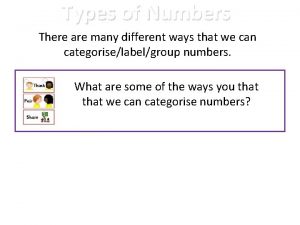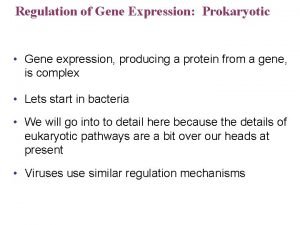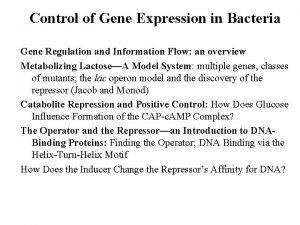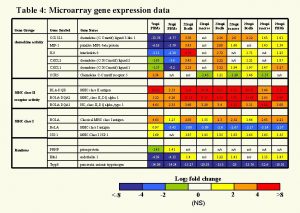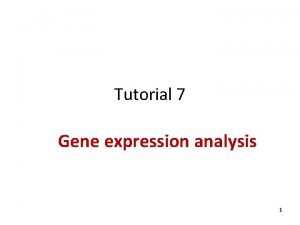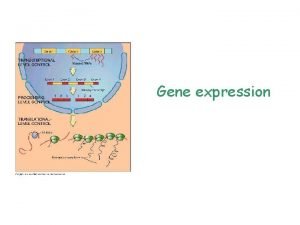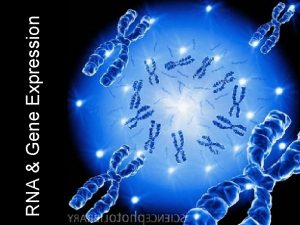Introducing microarray Gene expression There are many different














- Slides: 14

Introducing microarray

Gene expression • There are many different cell types, but every cell in our body contains the same genetic information. • Why? Gene expression. 2

When are genes expressed? 3

Measuring gene expression Different techniques are used to measure gene expression, such as: • northern blotting • reverse transcription polymerase chain reaction (RT-PCR) • microarray 4

Microarray and gene expression • Microarray technology measures the amount of m. RNA present in many samples at once. • What genes are expressed and in what amounts? Image courtesy of Affymetrix Inc 5

Microarray and cancer Microarray is used to study cancer, enabling: • classification of disease subtypes • identification of genes that may be useful targets for personalised medical treatment • selection of treatments suitable for individual patients 6

Step 1: Prepare microarray slide A microarray slide is embedded with manufactured single-stranded DNA segments from known genes. 7

Step 2: Collect patient samples Normal skin cells and melanoma cells are collected from each patient and m. RNA isolated. 8

Step 3: Convert and label • m. RNA in patient samples is converted into c. DNA. • Samples are then labelled with fluorescent dye: normal skin cells with green dye, and melanoma cells with red. Once labelled, the two c. DNA samples are mixed together. 9

Step 4: Add c. DNA to microarray slide • c. DNA will hybridise (bind) with complementary strands embedded on the microarray slide. 10

Step 5: Visualise microarray results • Using laser microscopy the microarray slide is scanned revealing different coloured spots on the slide: red, green, yellow and black. 11

Interpreting microarray results 12

Microarray simulation This simulation uses p. H indicators to simulate microarray technique. gene expressed more in normal cells gene expressed equally in normal cells and cancer cells gene expressed more in cancer cells 13

© 2015, The University of Western Australia ast 1166 | version 1. 0 Gene expression 3: Introducing microarray For conditions of use see spice. wa. edu. au/usage Developed for the Department of Education, Western Australia 14
 Mikael ferm
Mikael ferm Chapter 17 from gene to protein
Chapter 17 from gene to protein Leave taking expression and response
Leave taking expression and response Gene by gene test results
Gene by gene test results How many different rocks are there
How many different rocks are there Different kinds of sport
Different kinds of sport Language
Language How many different types of numbers are there
How many different types of numbers are there Stefanos nikolaidis
Stefanos nikolaidis How many different types of bread are there
How many different types of bread are there Boolean operators
Boolean operators There are many types of sports
There are many types of sports Operon lac
Operon lac Prokaryotic
Prokaryotic Regulation of gene expression in bacteria
Regulation of gene expression in bacteria







